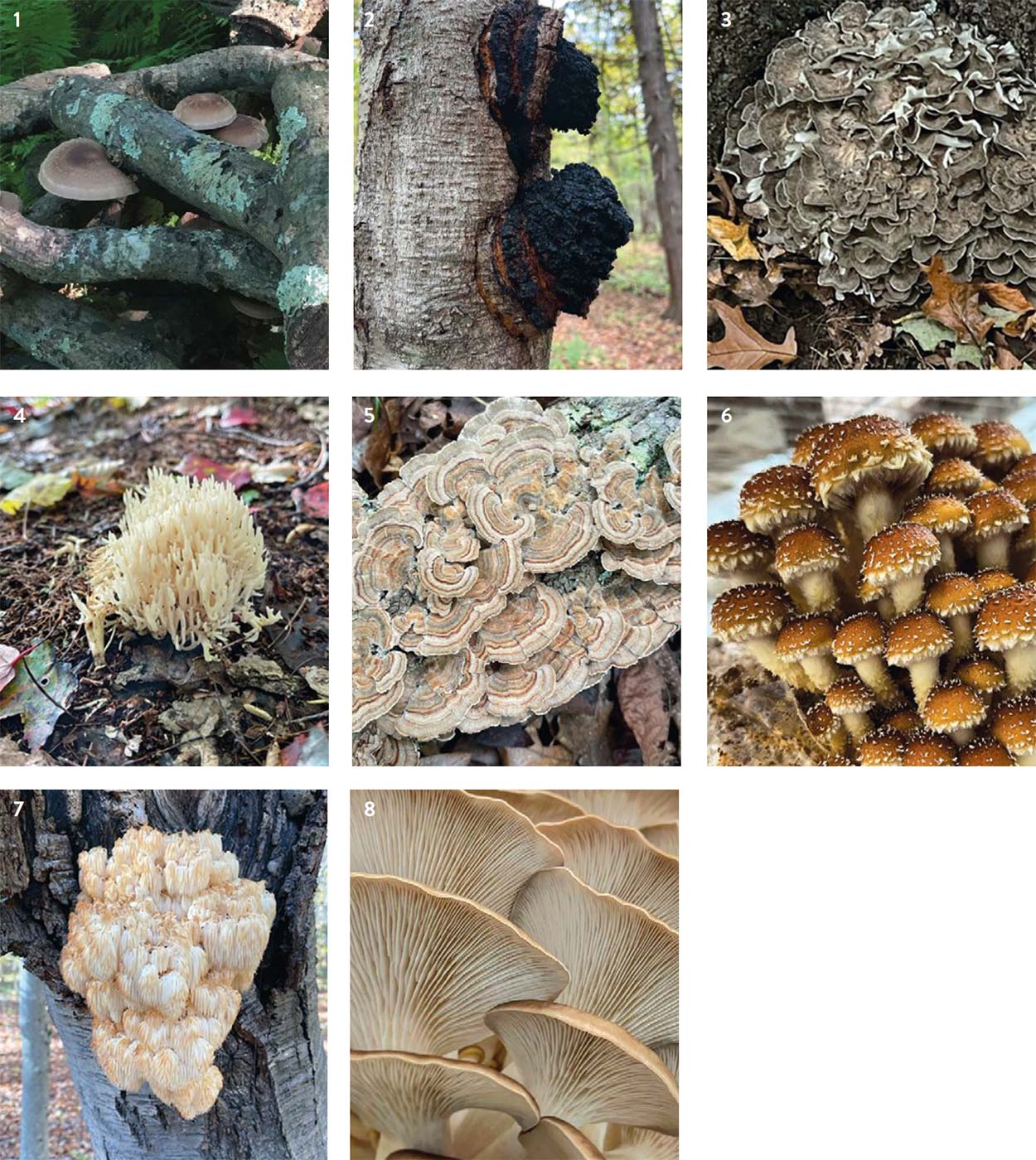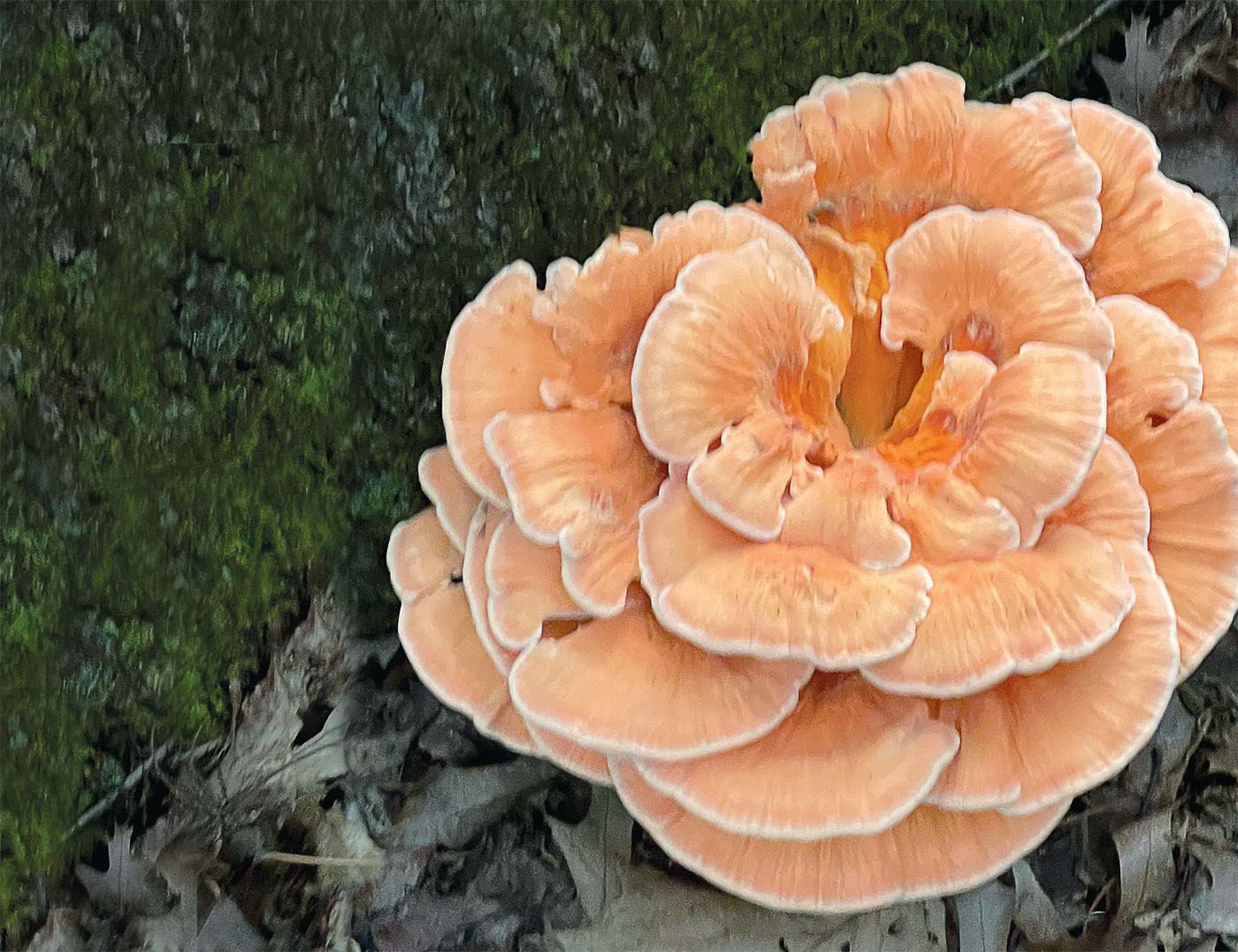The Marvelous World of Mushrooms
The crisp leaves crunch quietly beneath the forager’s feet. She peers through the woods and notices a fallen tree in a slight clearing. As she approaches it, she runs her hand across the light green lichen lacing the top of the rough bark. The sun dances through the canopy’s branches, warming a small clear pool of water beside the fallen tree. She leans down and inspects the sides of the broad stump. She finds exactly what he has been looking for lining the woody surface: mushrooms.
People have been foraging for mushrooms – a type of fungi – for thousands of years. Fungi have their own unique place in our natural world. While plants make their own food through the process of photosynthesis by which they convert light, water, and carbon dioxide, fungi absorb nutrients directly from their environment.
There are over 10,000 types of mushrooms that exist including over a thousand wild mushrooms that have been identified in Connecticut alone.
Local farmer John Taylor, owner of The Daily Market Farm, which is USDA Certified Organic and located in Waterford, has been foraging for about six years. He has faced the challenges of Crohn’s disease throughout his life and deeply values the importance of nutritious food. His father-in-law had been growing on the land his farm is now on for many years.
When it came time for his father-in-law to wind down farming, John was able to step in. John started The Daily Market Farm in 2018 and the farm has been steadily growing. As the typical growing season wraps up each fall, John spends some time foraging in the woods. August through December is an excellent time for foraging.
Mushrooms that have a distinct appearance that John enjoys fi nding include lion’s mane, chicken of the woods, hen of the woods, morels, chanterelles, oyster mushrooms, and chaga fungus. John points out that certain types of trees tend to have certain types of mushrooms associated with them. For example, morels are associated with apple and tulip poplar trees while chaga fungus is found on birch tree
If you are interested in foraging, you should learn from experienced foragers who are familiar with local mushroom species. The Connecticut Foraging Club off ers walks, classes, and other opportunities to learn. Peterson Field Guides – A Field Guide to Mushrooms: North America written by Kent and Vera McKnight is a guide recommended by the University of Connecticut Home and Garden Education Center, among others.
If foraging isn’t your forte, there are a variety of local mushroom purveyors who grow delicious mushrooms in controlled environments. Seacoast Mushrooms in Mystic is a local favorite that grows shiitakes, king oysters, blue oysters, lion’s mane, and many others. You can find Seacoast Mushrooms in dishes that have been wonderfully crafted by Chef James Wayman at Nana’s in Mystic and in other restaurants throughout Connecticut.
A new mushroom grower on the scene is Collinswood Mushrooms in Tolland, Connecticut, owned by Randy Collins. Collinswood Mushrooms officially launched this year. Randy was a devoted UPS driver for over 20 years when tragedy occurred while he was working. An accident left him unable to walk for a period of time and he spent years recovering. Randy came across information on mushrooms and was intrigued by their medicinal properties. He tried reishi, chaga, lion’s mane and others which in traditional healing each have their own unique benefi ts. Randy credits mushrooms, including Lion’s Mane, with helping him regain his health.
Randy bought mushroom growing equipment from the world-renowned mushroom expert Paul Stamets, including Paul’s lab kit and grow room kit. Randy recommends reading The Mushroom Cultivator by Paul Stamets for those who are interested in growing their own mushrooms. Randy loves growing reishis, lion’s mane, bear’s head, all types of oyster mushrooms, chestnut, and more.
Randy recommends that people slowly cook their mushrooms in a well-seasoned cast iron pan for about 5 minutes before adding oil, butter, or other seasonings to help draw out the flavor of the mushroom. Randy is looking forward to learning more and is learning new things about growing mushrooms all the time. “I feel like I’m filling a need. I know they are becoming more popular and it’s nice to provide people with something they like.”
Thousands of years ago, foragers walked through our local forests to find what we can still experience today, whether that be in our own backyards or from talented local purveyors. The marvelous world of mushrooms is at hand right here in Connecticut.
- More info: www.thedailymarketfarm.com www.seacoastmushrooms.com, www.collinswoodmushrooms.com Connecticut Foraging Club on FB

A FEW CONNECTICUT MUSHROOMS:
Mushrooms are found and grown all over Connecticut! (Be sure to learn from experienced foragers who are familiar with local mushroom species before you eat them!)
1. Shiitake by Darren Cugno at Cugno's Farm - Colchester
2. Chaga by Kirsten Marra at Muddy Roots Farm - Wallingford
3. Hen of the Woods by John Taylor at The Daily Market Farm - Waterford
4. Crown Tipped Coral by John Taylor
5. Turkey Tail by John Taylor
6. Chestnut Mushrooms by Randy Collins at Collinswood Mushrooms - Tolland
7. Bear's Head Tooth by John Taylor
8. Phoenix Oyster Mushrooms by Randy Collins





